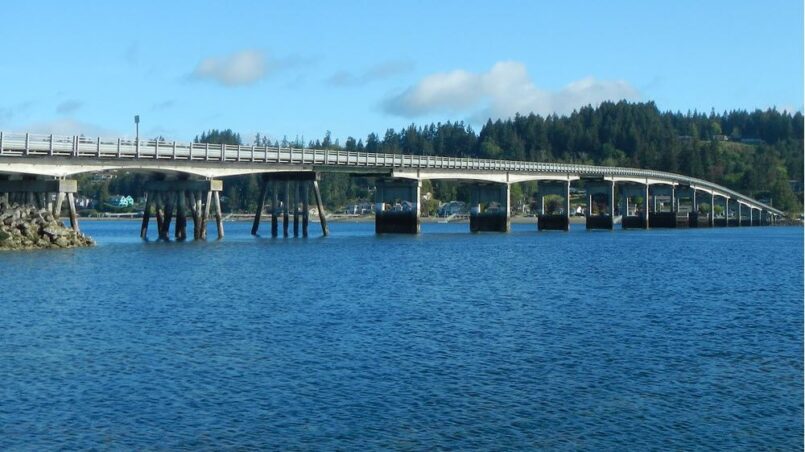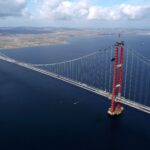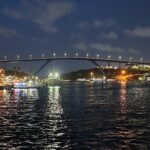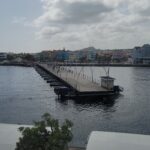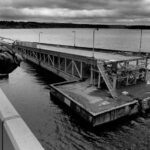I received a question from a Pierce County resident this past week. She wanted to know if I knew or had written anything about the Fox Island Bridge. As it so happens, the bridge had come to my attention during my tenure at HDR. Around 2016, the HDR Olympia office had been tasked with studying the bridge and delivering two reports – a Type, Size and Location (TS&L) study for a new bridge and a report outlining how the existing bridge might be rehabilitated. I was not involved in those studies, but I did hear about them.
In this edition of TheBridgeGuy, we’ll take a look at the Fox Island Bridge, its history, the island, the current bridge condition and what the county plans to do about it.
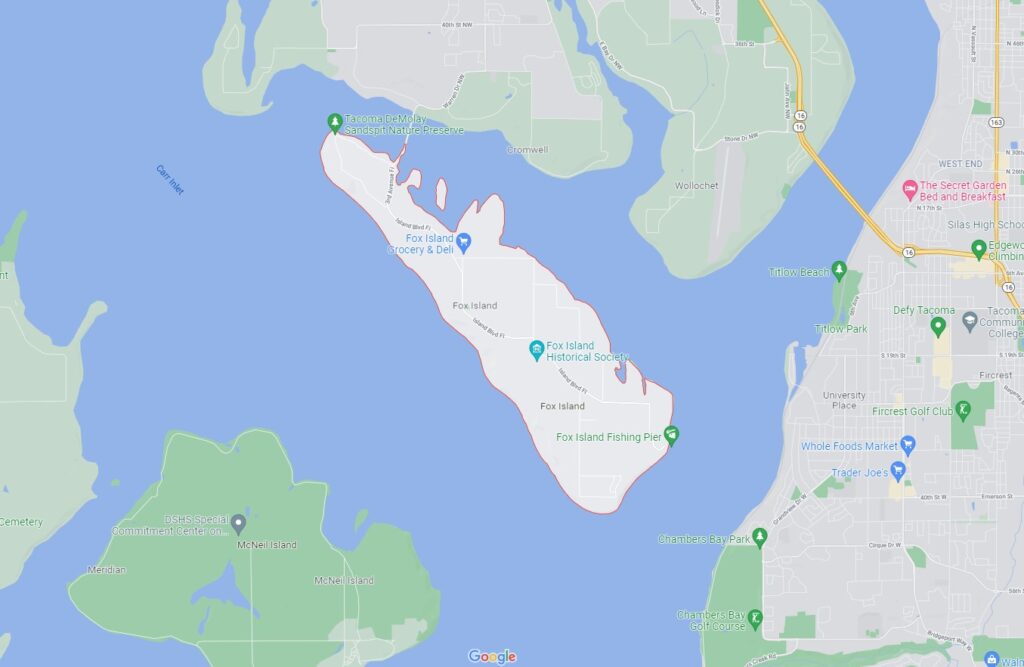
Fox Island is an island located in the southern part of Puget Sound at the intersection between the Tacoma Narrows and Hale Passage. It is separated from the Gig Harbor Peninsula and the mouth of Gig Harbor by Hale Passage, one of two such passages named for ethnologist Horatio Hale. Carr Inlet, named for Overton Carr by Charles Wilkes, separates Fox Island from McNeil Island.
The island was originally part of the territory of the Steilacoom people. The first record of a non-native landing on the island was by Peter Puget during the Vancouver Expedition in 1792. After a brief exchange with local native tribes in the area, the party made camp on the island for the night.
The island is named for J.L. Fox, an assistant surgeon on the United States Exploring Expedition of 1838 to 1842, also known as the Wilkes Expedition after its commanding officer. The expedition was intended to be a scientific expedition of the Pacific Ocean by a then fledgling United States government eager to explore new territory. Whereas the Vancouver expedition had been a British expedition, Wilkes’ trip would be a distinctly American one.
The island served as an internment camp for hostile native tribes during the Puget Sound war in 1856. After the war was over, it was the site of the renegotiation of the Medicine Creek treaty (1854), which gave larger reservations to the Puyallup and Nisqually peoples.
The first non-native settlements appeared in 1856. In 1881, 56.5 acres on the island were sold for $118. By 1908, some 60 homes had appeared on the island. By 2000, some 2,800 people lived on the island, 3,600 by 2010 and as of 2021, some 3,900 people call Fox Island home.
In order to connect the island with the mainland, a bridge was proposed. This bridge eventually connected the north end of the island with the Gig Harbor peninsula and was officially opened by Governor Arthur B. Langlie on August 28, 1954. The total length of the bridge is 1,950 feet and is made up of 20 spans, the longest being over the main channel at 120 feet.
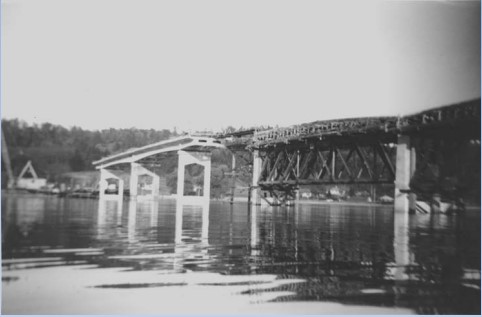
The bridge is made up of 6 individual reinforced concrete frames which are joined together, usually at in-span hinges, by steel plate girder drop-in or suspended spans. The northern (Spans 17-19) and southern (Spans 1-3) frames are three span continuous haunched girder spans that would have been cast-in-place. The remaining four frames are two span continuous with cantilevers at both ends. The steel spans are located in Spans 4, 7, 10, 13, and 16. Oddly, Span 20 is a simple span with concrete girders rather than steel.
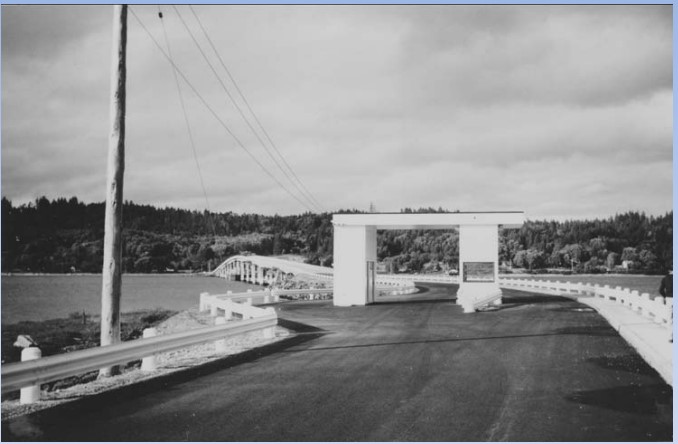
The substructure has two main pier types – precast pile bents and cast-in-place piers. The pile bents are founded on 18-20” precast, hexagonal driven piles and support Piers 1-4 and 17-21. The cast-in-place piers are founded on monolithic footings.
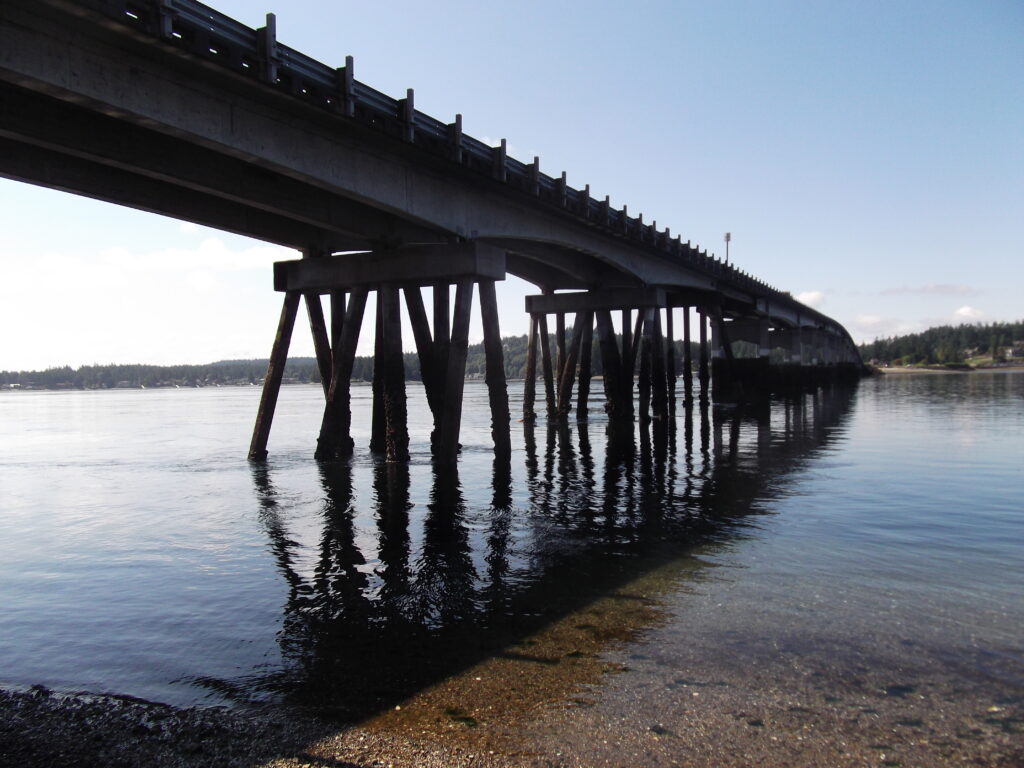
So how is the bridge fairing after 68 years in a saltwater environment? The latest bridge inspection report is available on Pierce County’s website and was performed in April 2021 by Pierce County. A subsequent inspection was performed using an Under Bridge Inspection Truck (UBIT) in August 2021. An underwater inspection was last performed on the bridge in 2017.
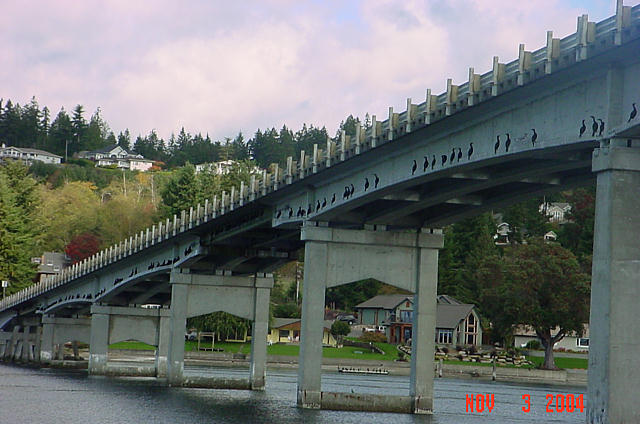
The underwater inspection of the bridge notes that the structural component conditions vary from good to poor. Of particular note is the advanced deterioration of what are called ‘cold’ joints in the footings. Cold joints are where concrete has been allowed to cure, before more green concrete is added. This forms a joint where the two portions of different age concrete do not bond well together and homogenize. Concrete that is dense can resist chloride intrusion for many years, however cold joints allow an easy path way for chloride carrying water to penetrate and attack the rebar.
Nearly all of the cast-in-place piers were built using sheet pile encased cofferdams. It appears that poor construction practices led to multiple cold joints in the footings. This has led to advanced deterioration, with the substructure National Bridge Inventory (NBI) coding being reduced to a 4.
Let’s pause here for a word on NBI coding, as many in the public misunderstand the coding of bridges. This could be an entire post in and of itself. Below is a table taken from the Washington State Bridge Inspection Manual (WSBIM) and defines the different levels of NBI coding.
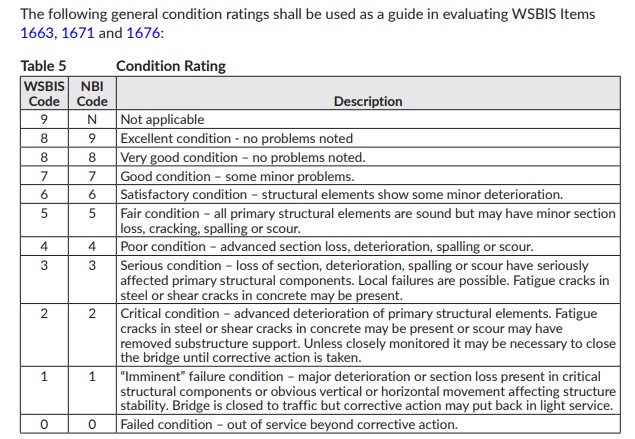
For asset management purposes, Bridge Management System (BMS) elements are further coded to determine the percentage of each element into four different ‘Condition States.’ Condition state 1 being the best, 4 being the worst. The WSBIM (pronounced Whizz-Bim) may use the percentage of particular elements of the deck, superstructure and substructure to determine the NBI coding for each of those elements. A coding algorithm, unintelligible to most of us, takes those NBI codings and determines the sufficiency rating – a number that strikes fear in the hearts of many of the traveling public. But it shouldn’t.
In any case, it is important to make a distinction – the NBI coding is a Federal metric while the BMS condition states are a State metric. NBI can be thought of as an overall metric whereas the BMS is element specific, narrowing down the culprit for a low coding.
According to BridgeReports.com, the bridge has had a poor rating since 2013, likely driven by a change in substructure coding from a 5 to a 4. After the latest inspection in 2021, the superstructure was coded down to a 4 due to continued deterioration of the superstructure. This led to a further reduction is sufficiency, which now sits at 6.23.
The superstructure (defined as everything above the bearings) is showing the typical signs of a reinforced concrete bridge, with uncoated rebar, located in a marine environment. Delaminiations, spalls and exposed reinforcement are apparent throughout the structure.
When chlorides penetrate the cover concrete, the layer of protection over the rebar, the rebar begins to corrode. Iron oxide takes up more room than steel, so as the rebar corrodes it expands. This expansion creates pressure on the cover concrete, causing it to separate or delaminate from the rest of the element. Delamination eventually leads to spalling, where the cover completely pops off, exposing the rebar beneath. Without the protection of the cover concrete, the rebar corrosion continues unhampered.
To sum up, the bridge substructure took a nose dive around 2013 and in 2021 the superstructure took its own nose dive. The bridge is load posted, meaning it can no longer carry legal loads. Without a major rehabilitation or replacement, the bridge is only likely to get worse.
In a presentation from October 2019, replacement of the bridge was expected to cost $168.1 million, where a major rehabilitation was expected to cost $79.5 million. The rehabilitation would only extend the life of the bridge and the cost did not assume future replacement at some future date. As you can see, rehabilitation is approximately 50% of the cost to replace the bridge. And this presentation was made before the superstructure was coded down in 2021. Has that changed the potential decision?
In 2016, HDR Inc. developed a TS&L report on a potential new bridge. Pierce County intends to realign the bridge to the north of the existing bridge and avoid Towhead Island altogether. The lowest cost alternative identified in the report ($87 million) is the precast post-tensioned splice girder option. The proposed bridge layout is a 3,270 foot long, 12 span bridge organized into three 4 span frames. Each frame would consist of two 340 foot spans with two 200 foot end spans.
Other options included conventional prestressed concrete girders, segmental and steel options. All were more expensive. Segmental is always generally a more costly option – special equipment is needed, it is dependent on erection engineering more than other bridge types and analysis is more complicated. Steel obviously has its issues – steel needs to be painted periodically.
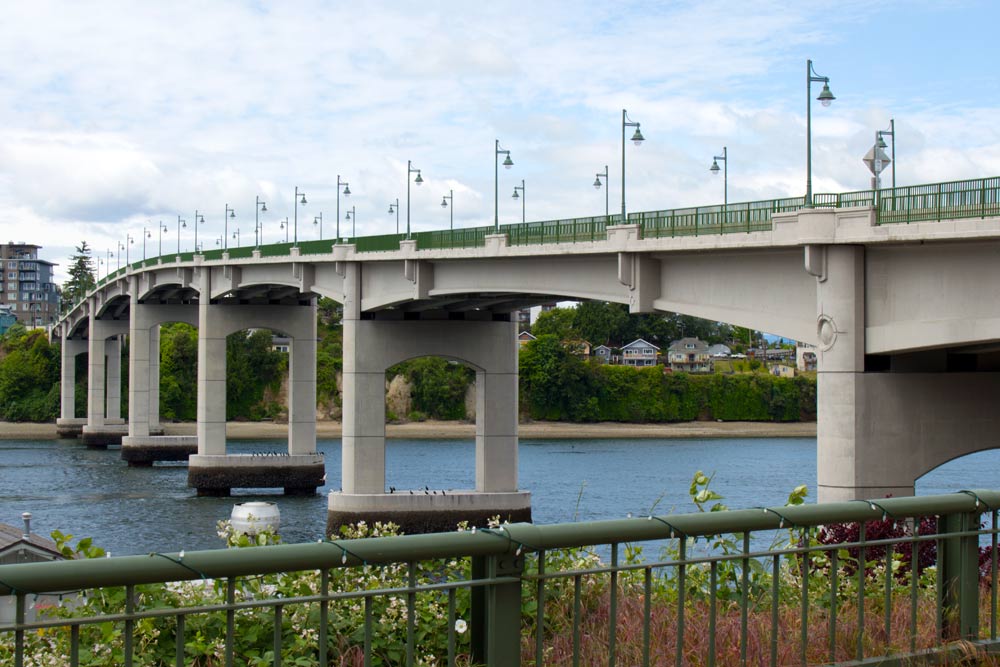
The Manette Bridge in Bremerton was cited as an example splice girder recently constructed over a similar waterway and at a similar length. An advantage to Fox Island’s location is that the girder segments could be barged to the site and erected from the water. This would make a work trestle virtually unneeded and dispenses with the pesky problem that limits span lengths for splice girder designs – hauling large segments to the site.
Funding issues aside, it appears that the correct path forward is replacement. The conceptual plans appear straightforward. The cost of a bridge and the question of where the funding would come from are always the two most daunting challenges outside the bridge engineer’s control. Our infrastructure continues to deteriorate, and like a mother bird with a nest full of hungry chicks – we’ve all got our heads back and mouths open. The Legislative session for 2021 (a short session) is in progress. On the table is a 16 year transportation revenue package worth $16 billion. Could Fox Island be one of the many projects needs that could get some of that funding? We shall see.
Views: 1402